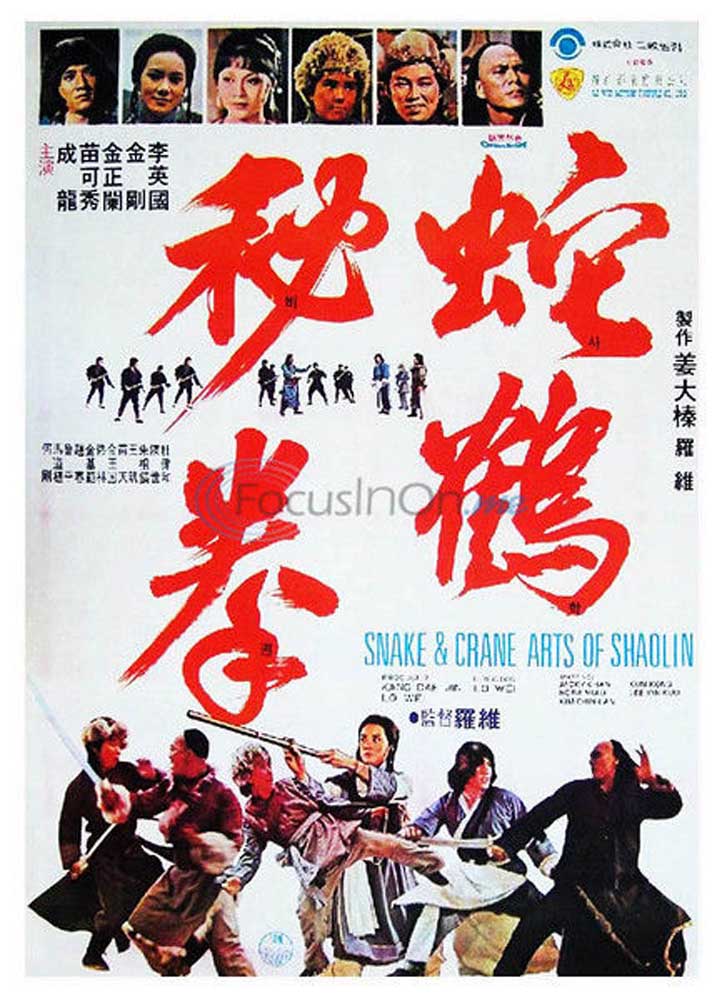Catching up on … ‘Snake and Crane Arts of Shaolin’
Published 9:10 pm Tuesday, January 21, 2014

- The 1978 kung fu film “Snake and Crane Arts of Shaolin” is unlike other Jackie Chan movies.
The 1978 kung fu film “Snake and Crane Arts of Shaolin” is unlike any Jackie Chan movie I’ve ever seen.
For the vast majority of his career, Chan has pretty much owned the persona of “hapless guy who finds himself in way over his head and manages to fight his way out of increasingly outlandish situations.” And it’s a persona that fits well. He pulls it off with the kind of flair and panache that rightfully earned him the title of “Kung Fu’s Buster Keaton.”
He’s an exceptional stuntman, one of the best ever in my opinion, and I enjoy pretty much everything of his that I’ve ever watched. But I must confess that it was refreshing to watch Chan in something that felt like the polar opposite of the vast majority of his work. This arrived pre-“Drunken Master,” the film that more or less introduced his style.
Right off the bat “Snake and Crane Arts of Shaolin” shows just how different this is from familiar Chan outings. The lengthy opening credits sequence is an extended showcase for Chan’s form, but it’s with something we almost never see him use anymore: Weapons. First a spear, and then a machete and tonfa. Chan has made a career out of turning everything — skis, windbreaker jackets, steering wheels — into weapons, so seeing him deftly handle these traditional arms feels odd but also exciting, like I’m seeing something that feels unique.
That sense of uniqueness extends into the film proper as well. Chan plays Hsu Ying Fung, a wandering fighter who claims to possess a book containing the secrets of the ultimate fighting style: “The Eight Steps of the Snake and Crane.” And unlike countless other films of his, he’s not just the bumbling guy who gets in way over his head. It’s quite the opposite, in fact.
Chan has perfected the art of making his fight scenes look like they’re improvisational bouts, but they also are largely fights where Chan’s character is reacting instead of taking charge and that might be the biggest difference between “Snake and Crane” and so much of the man’s work. Hsu has a confidence and precision to his style and skill that’s anything but hapless and reactive. Occasionally he uses a weapon, but for the most part Chan’s fighting is prop-free. And while his agility as a fighter and performer has never been in question (the man can run up walls, for crying out loud) there’s something even more impressive about watching him bouncing around here without the aid of props like chain-link fences or shopping carts or what have you.
As for the film at large, your enjoyment of it will be in direct correlation to how much you enjoy cheesy kung fu flicks. Between the hilariously awful dubbing to the whooshing sound effects and a setup that sounds like dozens of other films in the genre, this was, by far, the most stereotypical movie of this series so far. That said, it’s certainly not without its own charms, and the film never takes itself seriously, even for a moment and that lightness helps keep things fun even though the plot is mostly just a thin rail upon which to hinge fight scene after fight. I don’t think there’s a single scene that goes by where a fight of some sort doesn’t break out, so if you’re looking for wall-to-wall action, this is what the doctor ordered.
I wouldn’t rank this as a truly great movie or even one of Jackie Chan’s best movies, but it’s a lot of fun and a great showcase for the man’s skills, especially if you’re looking for something a bit more out of character for him. It’s a little difficult to track down, but if you can get your hands on it, it’s definitely worth a watch.
Next week, I’ll continue my reviews of classic kung fu movies with a look at “The One-Armed Swordsman,” followed by “Ten Tigers of Kwangtung.” To wrap up the series, I thought it’d be fun to bookend things with a look at Jet Li’s “Fist of Legend,” a remake of the Bruce Lee movie that I began this series with, “Fist of Fury.”
Every week, Entertainment Editor Stewart Smith brings a new entry in “Catching Up On…” an ongoing series attempting to fill in the gaps of his cinematic education.






